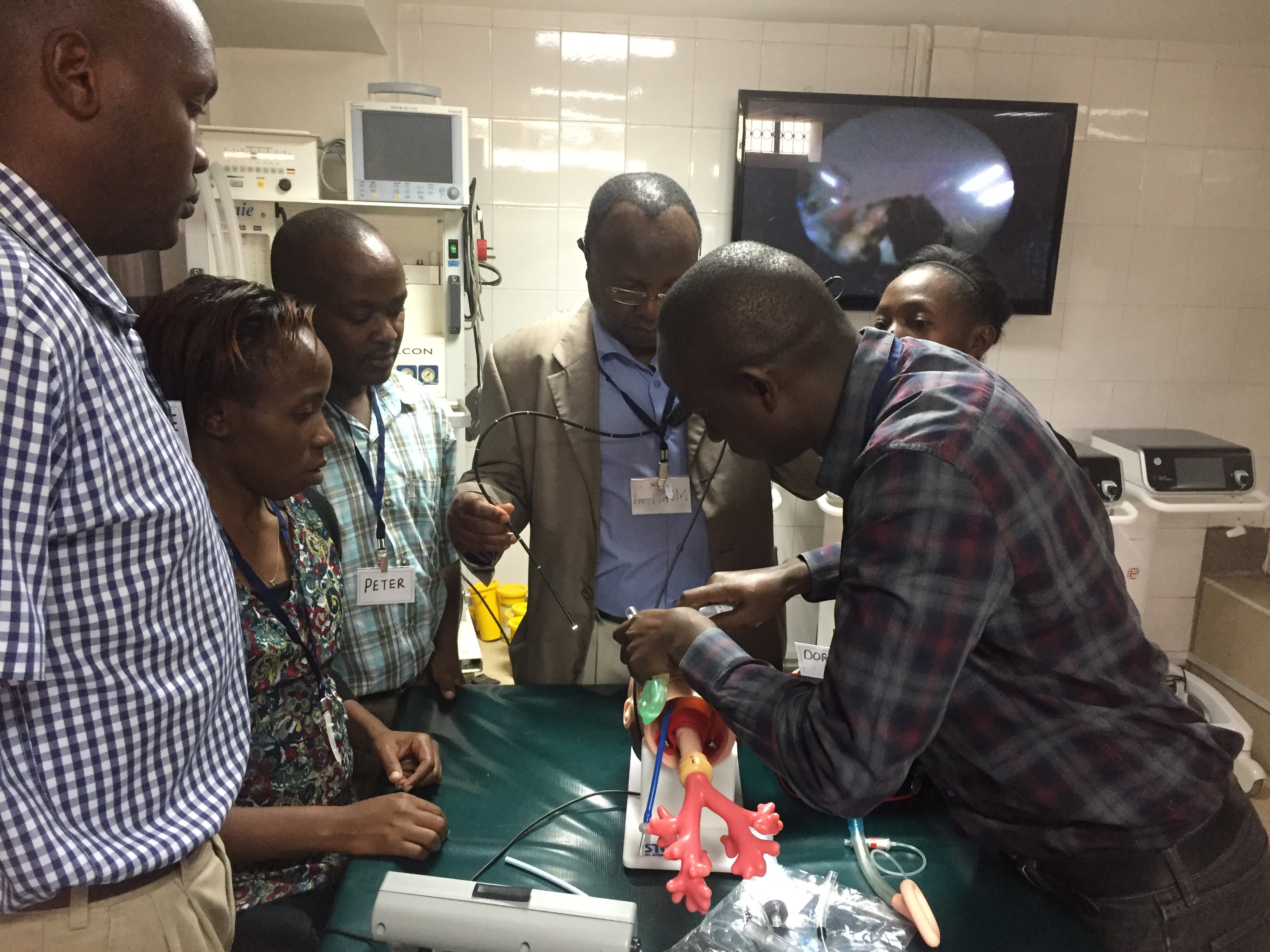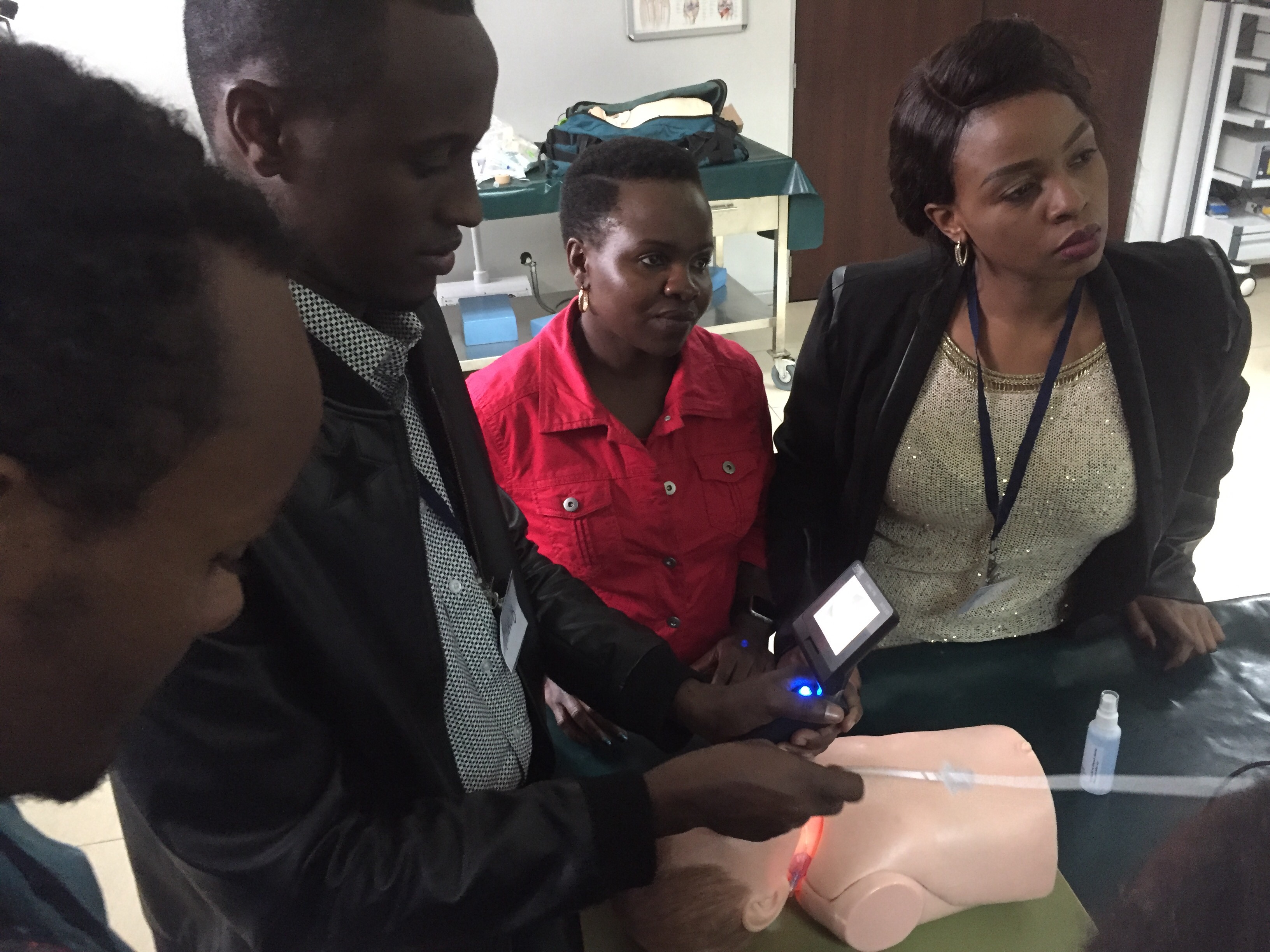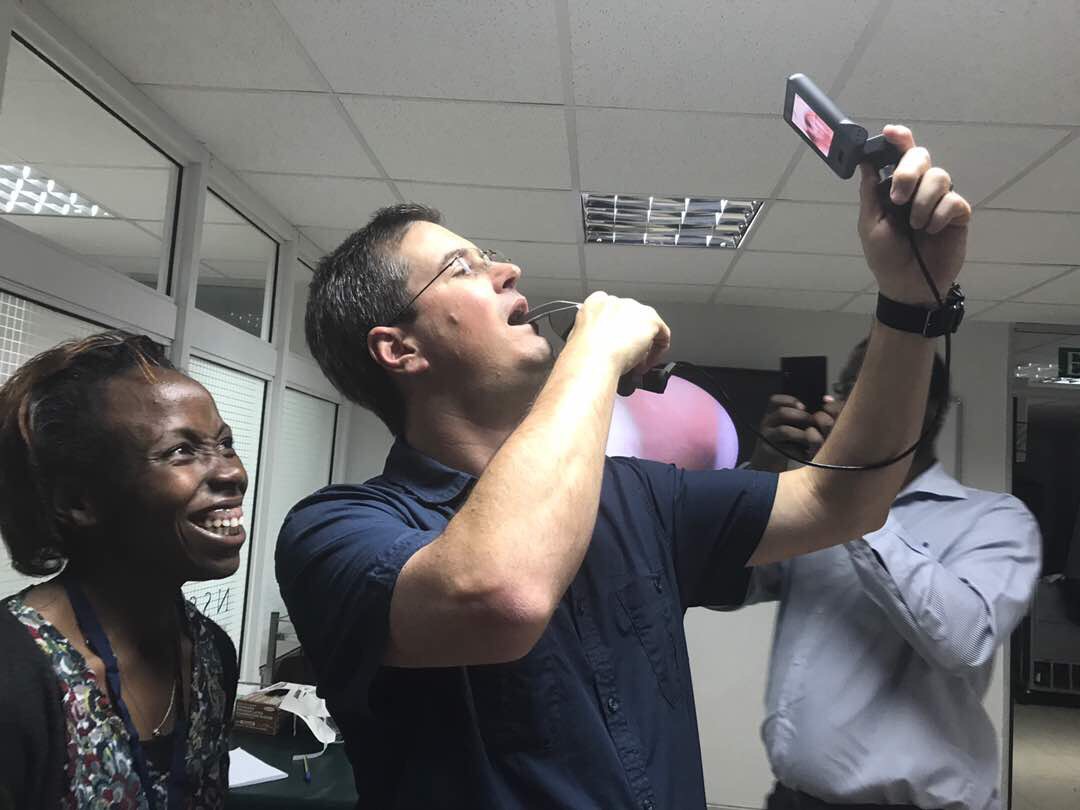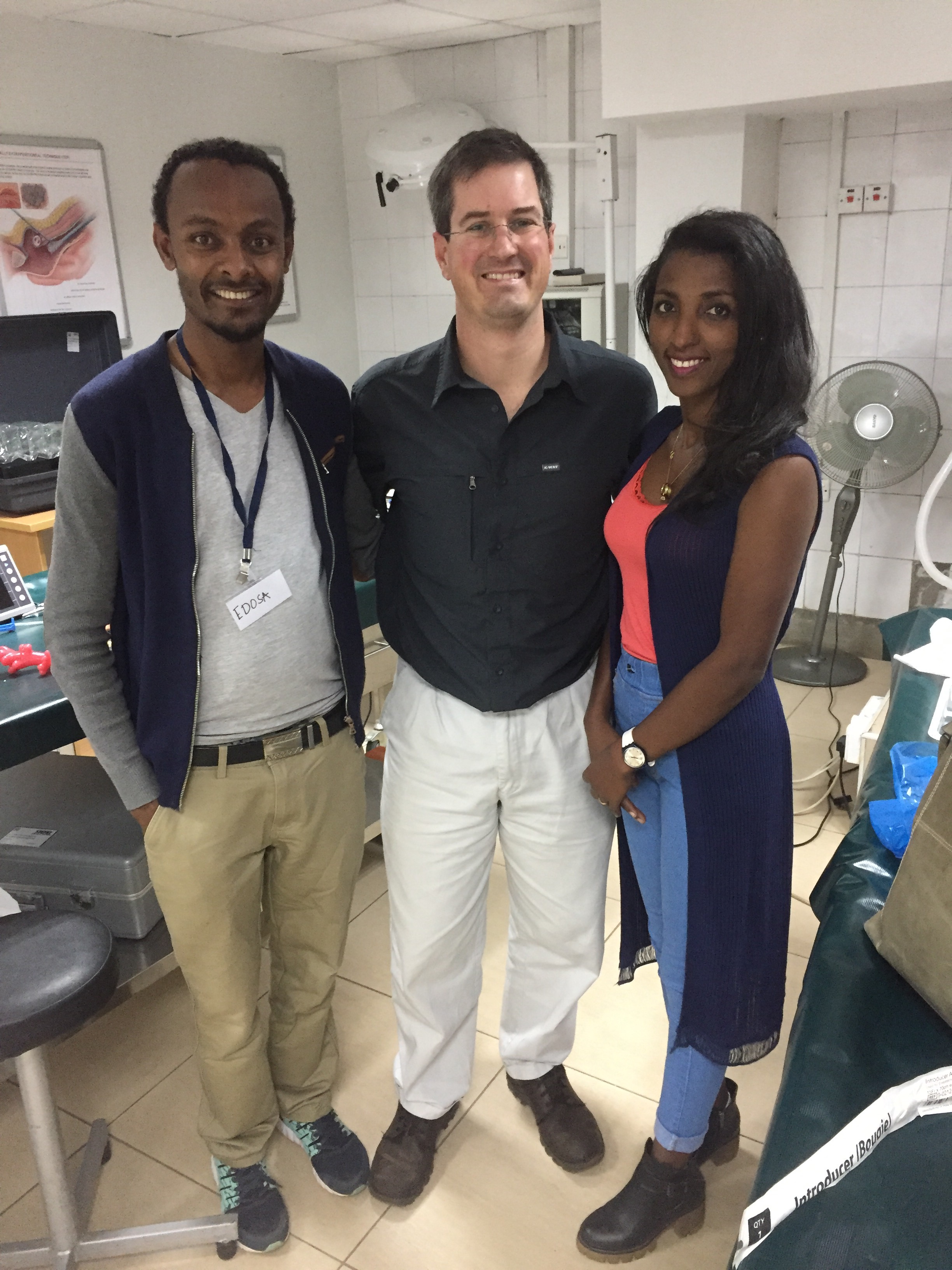If you work in an environment without constant access to staff to clean and process your video laryngoscopes, you need to know how to do it yourself. This quick video demonstrates pragmatic cleaning of the C-MAC VL (original and latest version) for low-risk patients. Where there is high infection risk, heavy soiling or blood on the blades, high level disinfection may be indicated.
Tag Archives: c-mac
Nairobi Airway Course 2017: Photos
Some photos of the action at the Nairobi Surgical Skills Centre this week. Many thanks to the local faculty from the University of Nairobi and other institutions, the companies that supported use of the facilities and equipment, and the enthusiastic delegates!










Resources and notes from the course are available on the course page here.
VLVids: Intubation in Spinal Immobilisation
Clinical video demonstrating a collection of techniques to facilitate elective intubation for a patient with an unstable cervical spinal injury in caliper traction. Note the sideways introduction of the VL blade due to limited space for the VL handle, optimisation of the view (‘Rule of 3’), use of a coude-tipped bougie (introducer), and the 3-part technique to advance the endotracheal tube when it catches on the arytenoid cartilage (pull tube back to disengage, rotate 90 degrees counterclockwise, advance tube).
Why is my C-MAC Pocket Monitor not working (again)?
Despite making a previous post and video to explain the way to make sure the device switches on, I regularly get told that the Pocket Monitor (PM) for our C-MAC video laryngoscope is not working/charging/switching on. This is in fact a design feature to prevent accidental activation or discharge. Watch here to find out more:
Thanks to the lovely Sam Adams for playing along…good career in acting if anaesthesia were to ever become boring!
C-MAC PM not turning on?
Folks are frequently reporting that our C-MAC Pocket Monitor is not switching on when they plug it in to a blade and want to use it, without realizing that it automatically goes into a hibernation mode if left in the open position for more than 15 minutes. Check out this quick AirwayHowTo video on solving this problem:
https://www.youtube.com/watch?v=Ap18Dm_-6TE
Cormack-Lehane Grading Examples
Here are some real-life examples of Cormack-Lehane classification of laryngoscopic view taken with a video laryngoscope. Although initially described for direct laryngoscopy in obstetric patients, it is a useful descriptive system in many settings, but is frequently misreported and/or misunderstood. We will continue to expand the set as we collect good images.
Original and revised (Yentis & Lee, 1998) CL grading:

Colour-coded to make it a little easier to read:

…and here from the CoPilot VL material, a more anatomically-correct sketch which shows the distinction between 2a and 2b clearly:

Cormack-Lehane 2a:
See the original article by RS Cormack and J Lehane in Anaesthesia, 1994;(39):1105-1111.
Various modifications to this scheme have been proposed for use with video laryngoscopy (VL), including suggestions by Cook and Fremantle:
Bougie-assisted intubation snagging on arytenoid
This common problem is worst with small bougies, such as in this paediatric example of a child with severe burns and a difficult airway. The bevel of the ETT allows the tip of the tube to stick out right (laterally) of the bougie and snag on the right arytenoid cartilage. This can be remedied by withdrawing the ETT slightly (to disengage it from the arytenoid), effecting a one-quarter counter-clockwise rotation of the ETT on the bougie (bringing the bevel and tip of the ETT into a superior midline position snug with the bougie), and then advancing again.
https://www.youtube.com/watch?v=DvnQL56FHZ8&feature=youtu.be





